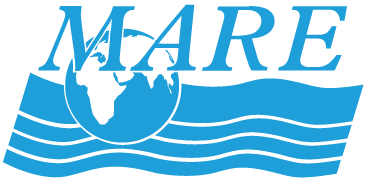Skip to content
- Explaining the Model. This picture shows a carbon cycle. The objects (cow, tree, ocean, soil, etc) are carbon reservoirs [—a place where carbon is stored], the arrows represent carbon flows [—carbon moving from one reservoir to another]. This simulation allows the user to focus on different views of the carbon cycle (reservoirs only; natural flows; human industry flows; natural flows into the atmosphere; flows out of the atmosphere; all flows into the atmosphere; and, all flows) by clicking on these title descriptions, found at the top of the screen.
- Show Reservoirs View. Click on the Reservoirs tab on the simulation, and allow the students time to explore the different carbon reservoirs shown. By clicking on any reservoir icon another screen is revealed, showing more information about that reservoir.
- Show Natural Flows View. Click on the Natural Flows tab on the simulation, and allow the students time to explore the different flows of carbon from one reservoir to another. The numbers shown are the amounts of carbon moving, in gigatons per year. By clicking on any flow arrow another screen is revealed, showing more information about that flow.
- Ask the Guiding Question. Ask students to turn and talk to one another about this question, “How does human industry affect flows of carbon in the Carbon Cycle?” The Carbon Cycle in this view shows no carbon flowing from one reservoir to another that is caused by humans, do the students think some arrows should be added to the Carbon Cycle? What are some human activities that might cause carbon to move? Where do they think these arrows should go? What is their estimate for the amount of carbon that is flowing along these flow arrows? [If students need prompting, draw their attention to the ‘Fossil Fuels: natural gas, crude oil, coal’ carbon reservoir on the Carbon Cycle simulation, mention that we make cement from limestone, and how humans change the way land is used.]
- Show All Flows View. Click on the All Flows tab on the simulation, and ask the students what they notice, what they find interesting or surprising.
- Show Human Industry Flows View. Click on the Human Industry Flows tab on the simulation, and ask the students to discuss what they notice and what they are wondering. Ask the students to tally the total amount of carbon flowing into the atmosphere caused by human industry, [9.4 gigatons].
- Investigating the Carbon Cycle Mathematically—total Flows into and out of the Atmosphere. Explain that scientists often use math to understand Earth Systems such as the Carbon Cycle, and that is what they will do now. Click on the Flows out of Atmosphere tab on the simulation, and have the students tally the total amount of carbon flowing out of the atmosphere, in gigatons/year [add all the green arrow numbers together]. Explain that this is the total amount of carbon that flows out of the atmosphere each year, not counting flows from human industry, [210.1 gigatons]. Click on the Natural Flows into Atmosphere tab on the simulation, and have the students tally the total amount of carbon flowing into the atmosphere, in gigatons/year [add all the green arrow numbers together]. Explain that this is the total amount of carbon that flows into the atmosphere each year, not counting flows from human industry, [210.08 gigatons]. Ask students what they notice about the amounts of carbon going into the atmosphere and the amount going out, [roughly the same amount is going in as going out]. Tell students that for a very long time, the flow of carbon into and out of the atmosphere has been balanced.
- Show All Flows into Atmosphere View. Click on the All Flows into the Atmosphere tab on the simulation, and ask the students to turn and talk about the guiding question, “How does human industry affect flows of carbon in the Carbon Cycle?”

